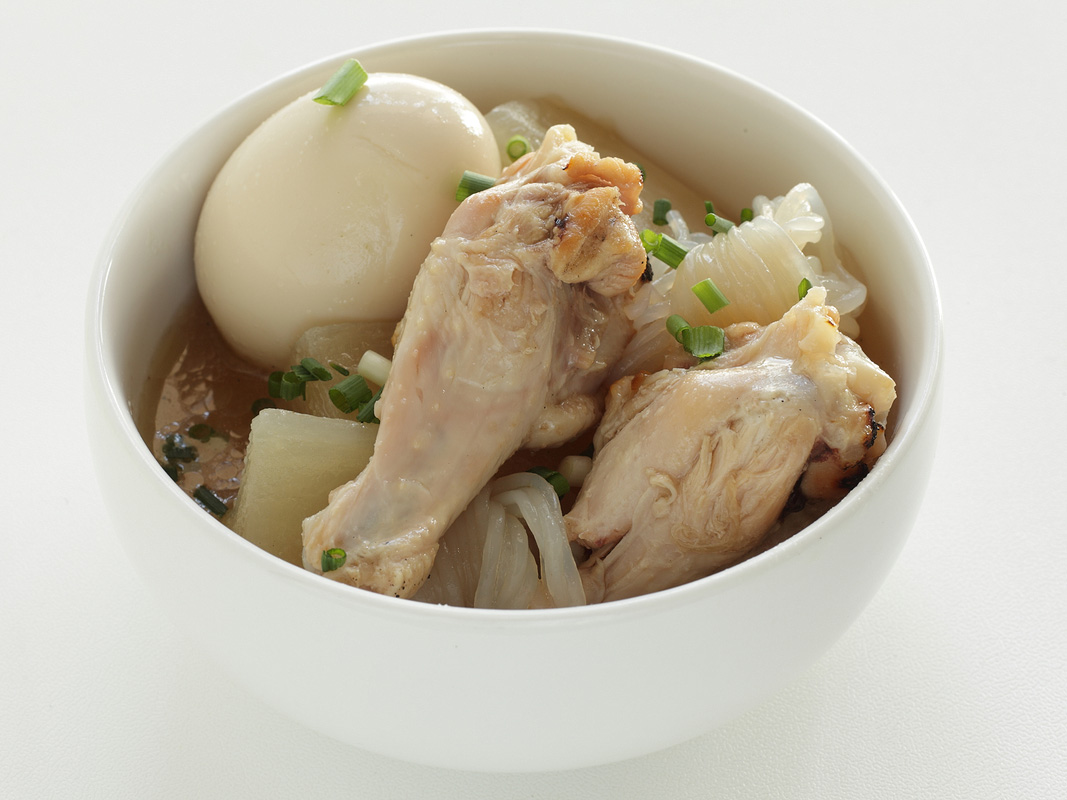Poaching is a very gentle, moist heat method of cooking using a minimum amount of reduced liquid or stock that is kept at just below simmering point, approximately between 90 to 94°C (194 to 201°F). Poaching liquid should show very little movement – a mere “murmur” or shimmer at the surface, with no sign of bubbles bursting.
Poaching is best for very delicate foods, such as eggs, fish, lamb, chicken and fruit. It is a very healthy cooking method, because liquid—not fat—carries the heat into the food. It is the method accomplished with the least amount of heat, and, therefore is a gradual, gentle cooking process.
Poaching Methods
Poaching can be done in a pan, on the stove, in a bratt pan or in a covered dish in the oven at between 160 to 180°C (320 to 360°F). Poaching temperatures are lower than those used for simmering, and poaching times are shorter. Tender cuts with lower amounts of connective tissue are best, for poaching. Poaching takes patience. Poaching allows the proteins in foods to uncoil, or denature, slowly, without squeezing out moisture. If you were to drop a delicate chicken breast into boiling water, the proteins would seize up so quickly that all the moisture would be squeezed out, and you would end up with a small piece of dry, chewy rubber!
Simmering
Simmering is a slow, gentle, moist method of cooking in liquid or stock, usually in a deeper pan than that used for poaching. Liquid is heated to just below boiling point, approximately 95 to 99°C (203 to 210°F) – higher than that used for poaching, with slightly more movement in the cooking liquid; tiny bubbles rising slowly to the surface and only occasionally bursting. This is much less movement than when boiling. Simmering can be done in a deep pan, stock pot on the stove, kettle, bratt pan or in a combination oven.
Simmering is best for cuts with higher amounts of connective tissue which need long, slow cooking to tenderise them.
Tips for poaching and simmering
Cook gently for most tender results.
Arrange chicken or lamb cuts in a single layer in the poaching, simmering pan, to ensure even cooking.
Use a rich stock when poaching for a short time, as brief cooking does not allow rich, strong flavours to develop in the pan.
A well flavoured poaching or simmering liquid can be used in sauces to accompany the meat.
Pre-soaking and blanching: Some salted chicken and lamb products may be soaked in cold water to extract some salt prior to cooking. To blanch salted or pickled meat start it off in cold water, then bring to the boil, simmer and refresh under cold running water. After refreshing, simmer blanched meat in stock or liquid until cooked.
Suitable cuts of meat for poaching and simmering
Lamb leg cuts, breast and flap, shoulder and neck chops, shank, brains; salmon and seer steaks and almost every cut of chicken are suitable for poaching and simmering.

